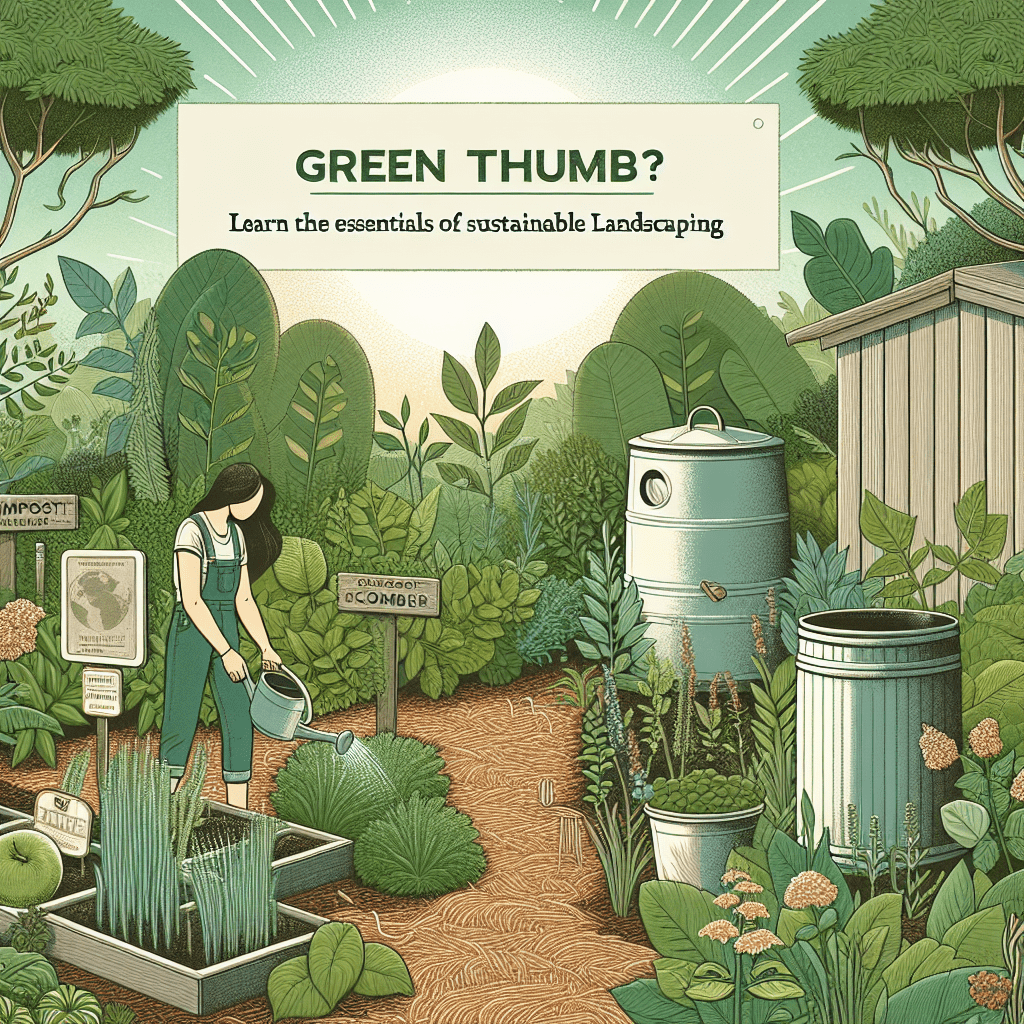Having a green thumb is more than just a hobby; it’s a way of life that promotes sustainability and environmental stewardship. By embracing the principles of sustainable landscaping, you can create a beautiful outdoor space that benefits both you and the planet. In this article, we’ll explore the essentials of sustainable landscaping and how you can implement them in your own garden.
1. Choose Native Plants
Native plants are well-adapted to your local climate and soil conditions, making them more resilient and less dependent on water and fertilizers. By incorporating native plants into your landscape, you can reduce maintenance requirements and support local wildlife.
2. Practice Water Conservation
One of the key principles of sustainable landscaping is water conservation. Use efficient irrigation systems, collect rainwater in barrels, and mulch your garden beds to retain moisture. By reducing water usage, you can save money on your water bill and help conserve this precious resource.
3. Minimize Chemical Use
Avoid using synthetic pesticides and fertilizers in your garden, as these chemicals can harm beneficial insects, birds, and other wildlife. Instead, opt for organic alternatives or natural pest control methods to maintain a healthy ecosystem in your yard.
4. Compost Organic Waste
Composting is a great way to reduce waste and improve soil health in your garden. Turn kitchen scraps, yard trimmings, and other organic materials into nutrient-rich compost that can be used to fertilize your plants and improve soil structure.
5. Create Wildlife Habitats
Attract beneficial insects, birds, and other wildlife to your garden by providing food sources, shelter, and water sources. By creating a diverse ecosystem in your yard, you can promote biodiversity and help support native species.
Conclusion
By incorporating sustainable landscaping practices into your garden, you can create a beautiful and environmentally-friendly outdoor space that benefits both you and the planet. From choosing native plants to conserving water and minimizing chemical use, there are many ways to promote sustainability in your landscape. Start small and gradually incorporate more sustainable practices into your gardening routine to make a positive impact on the environment.
FAQs
What are the benefits of sustainable landscaping?
Sustainable landscaping promotes environmental stewardship, conserves resources, reduces maintenance requirements, and supports local wildlife.
How can I start practicing sustainable landscaping?
You can start practicing sustainable landscaping by choosing native plants, conserving water, minimizing chemical use, composting organic waste, and creating wildlife habitats in your garden.
Tip
Consider incorporating a mix of edible plants, such as herbs, fruits, and vegetables, into your landscape to create a sustainable and productive garden that provides fresh and healthy food for you and your family.
#Green #Thumb #Learn #Essentials #Sustainable #Landscaping
